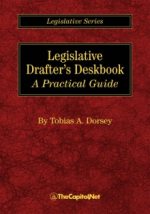“Grasstops”
an excerpt from the new book
PERSUADING CONGRESS:
A Practical Guide to Parlaying an Understanding of Congressional Folkways and Dynamics into Successful Advocacy on Capitol Hill
by Joseph Gibson
Published by TheCapitol.Net
In his new book, Persuading Congress, Joseph Gibson says that “grassroots efforts have limited utility for most issues,” due to the difficulty of mobilizing large numbers of personal responses to members of Congress. Members respond to personal stories but are numb to mass mailings, duplicate emails, or scripted phone call campaigns.Gibson offers an alternative strategy in this excerpt. “Grasstops” refers to getting VIPs to pitch a member of Congress for you. TheCapitol.Net has made this excerpt available for free use. More information about the book, “Persuading Congress,” and author Joseph Gibson, follows the excerpt. Thank you.
Goodwin, Byrd, and the Filibuster
Carte Goodwin (D-WV) was sworn in Tuesday as an interim replacement of Sen. Robert Byrd (D-WV), who passed away on June 28 while in office. At 36 years old, Sen. Goodwin is the youngest current Senator, and is filling the shoes of the man who was the oldest and, as we mentioned yesterday, the longest-serving Senator. … Read more








